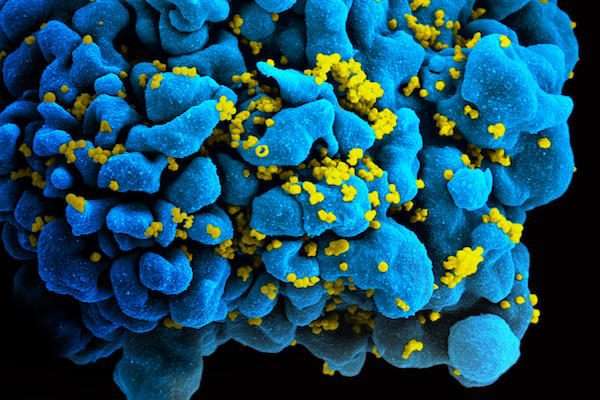No two kinds of retroviruses look—or act—the same

In the most comprehensive study of its kind, researchers in the Institute for Molecular Virology and School of Dentistry at the University of Minnesota report that most types of retroviruses have distinct, non-identical virus structures.
Researchers analyzed seven different retroviruses including two types of HIV as well as HTLV-1, a virus that causes T-cell leukemia. They also examined retroviruses that infect birds, mice, chimpanzees and fish, that can cause cancer or immunodeficiency.
"Each kind of retrovirus has distinct structural features and each assembles virus particles differently," said Louis Mansky, Ph.D., director of the Institute for Molecular Virology, who is also a member of the Masonic Cancer Center. "Most researchers assume that all retroviruses are just like HIV, but they're not. We cannot take a one-size-fits-all approach when studying retroviruses and discovering new strategies for antiviral treatments or vaccines."
Mansky's team looked at the behavior of retrovirus Gag proteins, which drive retrovirus particle formation. Once the virus enters a cell, reverse transcriptase converts the viral RNA to DNA, which subsequently creates the Gag protein.
Understanding the nature of Gag protein interactions with one another and how the structures form will help scientists better understand how and why the virus works. It will also help identify ways to target the virus and prevent it from infecting a cell in the first place.
The study examined virus-like particle size, cellular distribution and basic morphological features through three distinct microscopy techniques.
The team noted that:
- HIV-1 and HIV-2 have Gag proteins that assemble retrovirus-like particles with distinct structures and sizes, which implies that differences exist in how the two HIV types form new virus particles.
- HIV and HTLV-1 particles are quite distinct from one another in appearance, which also suggests fundamental differences in virus particle assembly.
"We found significant differences among the retroviruses," said Jessica Martin, senior Ph.D. student in the Department of Pharmacology and lead author on the study. "A parallel comparative study evaluating retroviral Gag proteins and virus particle intermediates of this size and scope has never been done before."
The team was surprised to find that one of the retroviruses, walleye dermal sarcoma virus (WDSV), did not readily produce virus particles.The disease can affect anything from 1-30 percent of walleye in a population, depending on the location. This research could help aquatic scientists better understand how to control the disease.
"Our study helps to highlight the importance of serendipity of basic science research," Mansky said. "We set out to learn more about the differences among two important human retroviruses, namely HIV and HTLV, which we did, but our findings also shed light on important differences among all kinds of retroviruses that could inform not only the treatment of human viral diseases but could also impact aquatic health in fisheries."
The study findings will help serve as a foundation for studying differences among retroviruses, including HIV.
"The scientific community can build off of our findings to develop new antiviral treatments, and hopefully determine how to stop these viruses from causing deadly diseases in humans such as cancer and AIDS," Mansky said.
The study was published online in the Journal of Virology.
More information: Jessica L. Martin et al, Distinct particle morphologies revealed through comparative parallel analyses of retrovirus-like particles, Journal of Virology (2016). DOI: 10.1128/JVI.00666-16




















